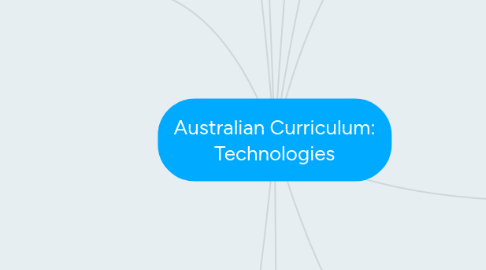
1. Content Structure
1.1. Digital Technologies
1.1.1. Temple Run http://dtm4260.edublogs.org/2015/08/09/temple-run-maths-made-fun/
1.1.2. Knowledge and Understanding
1.1.2.1. Data representation
1.1.2.2. Components of digital systems
1.1.2.3. Use, development and impact of information systems in people’s lives.
1.1.3. Processes and Production Skills
1.1.3.1. Toonatastic http://dtm4260.edublogs.org/2015/08/10/toonatastic/
1.1.3.2. Collecting, managing and interpreting data when creating information.
1.1.3.3. Using a range of digital systems.
1.1.3.4. Identifying problems and specifying and implementing solutions.
1.1.3.5. Creating and communicating information, online, and interacting safely.
1.2. Design and Technologies
1.2.1. Knowledge and Understanding
1.2.1.1. Use, development and impact of technologies in others lives.
1.2.1.2. Design concepts using a range of technologies.
1.2.2. Processes and Production Skills
1.2.2.1. Exploring and investigating needs or opportunities.
1.2.2.2. Generating, developing and evaluating design ideas.
1.2.2.3. Planning, producing and evaluating designs.
2. Cross-Curriculum Priorities
2.1. Aboriginal and Torres Strait Islander histories and cultures
2.2. Asia and Australia’s engagement with Asia
2.3. Sustainability
3. Links to the Other Learning Areas
3.1. English
3.2. Maths
3.3. Science
3.4. History
3.5. Geography
3.6. The Arts
3.7. Health and Physical Education
4. Key Ideas
4.1. Systems thinking and the overarching idea
4.1.1. Creating preferred futures
4.1.2. Develop the technologies knowledge, understanding and skills.
4.1.3. Provides a method for identifying and moving towards ethical, socially responsible and sustainable patterns of living.
4.1.4. Holistic approach (analysed individually).
4.2. Project management
4.2.1. Explicitly taught how to manage projects.
4.2.2. Planning
4.2.3. Evaluating processes.
4.2.4. Considering constraints.
4.2.5. Risk assessment and management.
4.2.6. Decision-making strategies.
4.2.7. Quality control.
4.2.8. Developing resource, finance, work and time plans.
4.2.9. Collaborating and communicating ideas.
4.2.10. Safety
4.2.10.1. Health.
4.2.10.2. Safety and injury prevention.
4.2.10.3. Ergonomics.
4.2.10.4. Cyber safety.
4.2.10.5. Data security.
4.2.10.6. Ethical and legal considerations for online communication.
5. Band Level Descriptions
5.1. Foundation - Year 2
5.2. Years 3 & 4
5.3. Years 5 & 6
5.4. Years 7 & 8
5.5. Years 9 & 10
6. Student Diversity
6.1. Students with disability
6.2. English as an additional language or dialect
6.3. Gifted and talented students.
7. General Capabilities
7.1. Literacy
7.2. Numeracy
7.3. ICT
7.4. Critical and creative thinking
7.5. Personal and social capability
7.6. Ethical understanding
7.7. Intercultural understanding
8. Content
8.1. Descriptions
8.1.1. Each band level.
8.1.2. Knowledge, understanding and skills that teachers are expected to teach.
8.1.3. Content descriptions are organised in such away to allow for sequential teaching.
8.2. Elaborations
8.2.1. Support material for teachers.
8.2.2. Assists with developing understanding of content descriptions.
